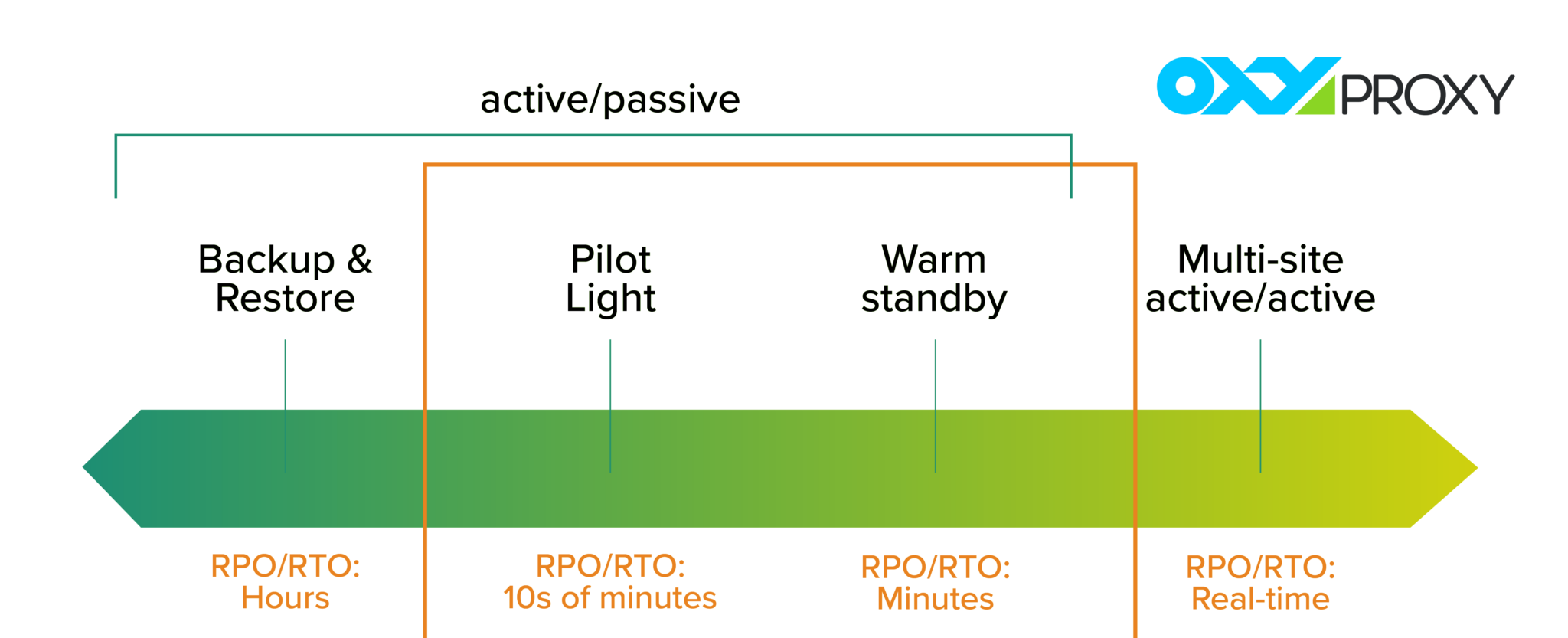Warm standby refers to a system in which a backup system runs simultaneously with the primary system but does not handle the active workload unless the primary system fails. In this method, the secondary system remains in a state of readiness to take over if needed, hence the term “warm.” This contrasts with a “cold standby” that is only started when needed or a “hot standby” that actively mirrors the primary system.
The History of the Origin of Warm Standby and the First Mention of It
The concept of a warm standby system dates back to the early days of computer systems when redundancy was identified as a crucial requirement for critical applications. The first mention of warm standby can be traced back to the 1960s in the context of military and space applications. Since then, it has become a common strategy in various domains like telecommunications, information technology, and more.

Detailed Information about Warm Standby: Expanding the Topic Warm Standby
Warm standby serves as a middle ground between hot and cold standby. While a hot standby might mirror the operations of the primary system actively, and a cold standby remains entirely offline, warm standby sits in between, regularly updating with changes but not actively mirroring the processes.
Key Components:
- Primary System: The active system handling the workload.
- Secondary System: The backup system, which is up-to-date but not actively handling the workload.
- Monitoring and Switching Mechanism: To detect failure and switch control to the backup system.
The Internal Structure of the Warm Standby: How the Warm Standby Works
A warm standby system includes regular synchronization with the primary system. In the event of a primary system failure:
- Detection: Monitoring tools detect the failure.
- Switch Over: The secondary system takes control.
- Synchronization: Any unsynchronized changes are applied from a buffer or log.
- Resumption: Normal operation resumes with minimal disruption.
Analysis of the Key Features of Warm Standby
- Availability: Enhances system availability.
- Cost-Effectiveness: Typically less costly than a hot standby.
- Recovery Time: Faster recovery than cold standby but slower than hot standby.
- Resource Utilization: Intermediate resource utilization.
Types of Warm Standby: An Overview
Here are some common types:
| Type | Description |
|---|---|
| Manual Warm Standby | Requires human intervention for switchover. |
| Semi-Automated Standby | Automates some aspects like detection but may require manual steps for recovery. |
| Fully Automated Standby | Completely automated process from detection to recovery. |
Ways to Use Warm Standby, Problems and Their Solutions Related to Use
- Use: Primarily in systems where high availability is needed but not to the extent of requiring a hot standby.
- Problems: Potential data loss, complexity in synchronization.
- Solutions: Regular synchronization, proper testing, and monitoring.
Main Characteristics and Other Comparisons with Similar Terms
| Characteristics | Warm Standby | Hot Standby | Cold Standby |
|---|---|---|---|
| Synchronization | Regular | Continuous | None |
| Recovery Time | Medium | Fast | Slow |
| Cost | Moderate | High | Low |
Perspectives and Technologies of the Future Related to Warm Standby
Emerging technologies like cloud computing, AI-driven monitoring, and more advanced synchronization techniques are likely to make warm standby even more efficient and responsive in the future.
How Proxy Servers Can Be Used or Associated with Warm Standby
In the context of proxy servers like those provided by OneProxy, warm standby can ensure uninterrupted service by having backup proxy servers ready to take over if the primary proxy fails. This enhances reliability without the full cost of hot standby systems.
Related Links
This article aims to provide a detailed and comprehensive understanding of the concept of warm standby, offering insights into its functionality, applications, and association with proxy servers like those provided by OneProxy.




